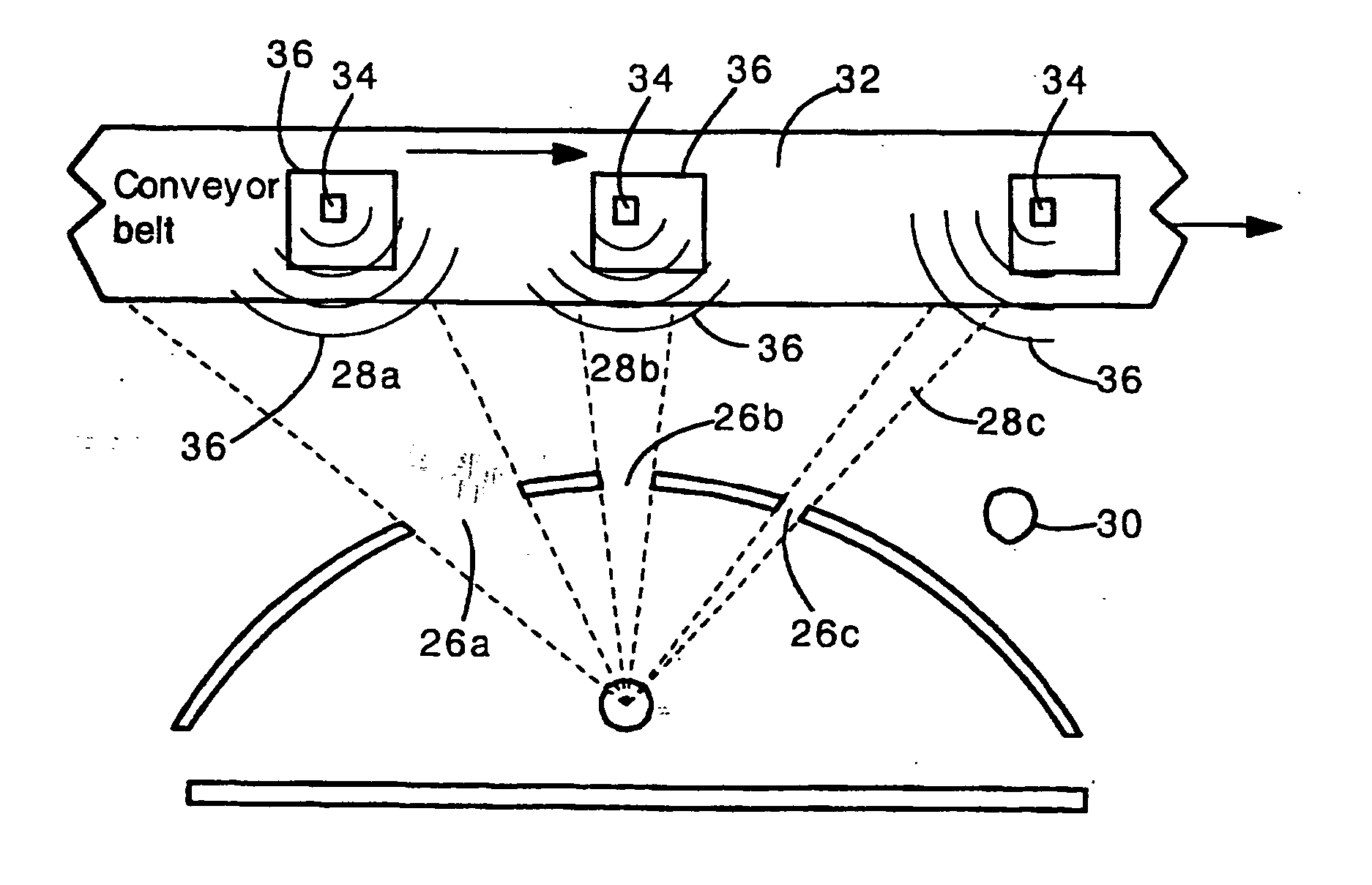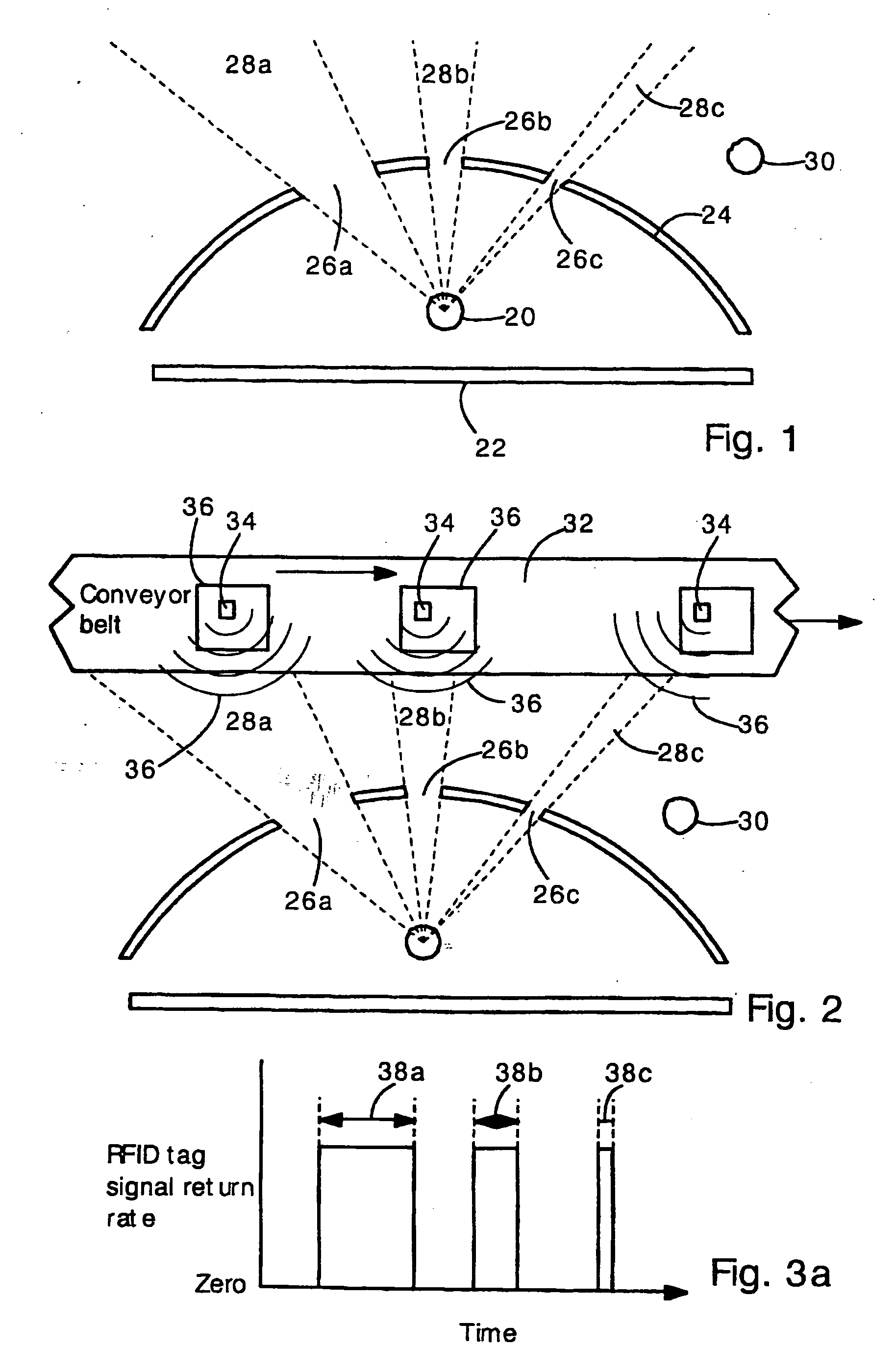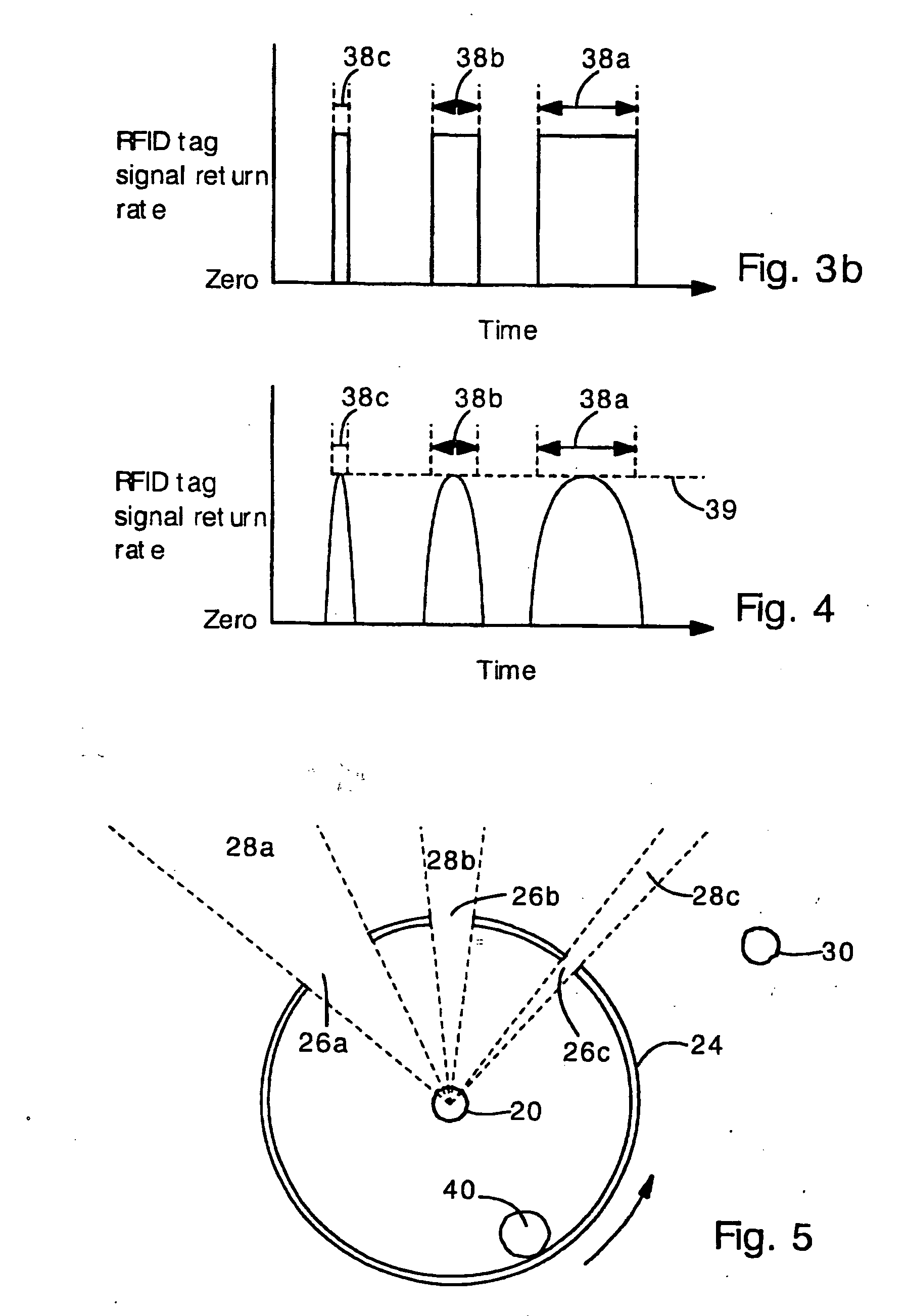RFID reader having antenna with directional attenuation panels for determining RFID tag location
- Summary
- Abstract
- Description
- Claims
- Application Information
AI Technical Summary
Benefits of technology
Problems solved by technology
Method used
Image
Examples
Embodiment Construction
[0024] The present invention provides an antenna structure and method for determining the location of a radio frequency identification (RFID) tag. The antenna structure comprises a conventional wide-angle antenna (e.g., a dipole antenna) surrounded by a non-uniform attenuator (e.g., sheet metal plate with holes). The attenuator may completely block or partially block the RFID tag signal in certain directions. The attenuator has windows (openings) that allow the RFID tag signal to pass through the attenuator. The antenna can detect the RFID tag signal only when the RFID tag is aligned with a window. In this way, the antenna can determine that the tag is located at one or one of several angular positions aligned with a window. If the RFID tag is traveling along a known pathway (e.g., along a road, train track, part carrying track, or conveyor belt) then the RFID tag position can be further defined. If the RFID tag passes in front of several windows having different sizes and angular p...
PUM
 Login to View More
Login to View More Abstract
Description
Claims
Application Information
 Login to View More
Login to View More - R&D
- Intellectual Property
- Life Sciences
- Materials
- Tech Scout
- Unparalleled Data Quality
- Higher Quality Content
- 60% Fewer Hallucinations
Browse by: Latest US Patents, China's latest patents, Technical Efficacy Thesaurus, Application Domain, Technology Topic, Popular Technical Reports.
© 2025 PatSnap. All rights reserved.Legal|Privacy policy|Modern Slavery Act Transparency Statement|Sitemap|About US| Contact US: help@patsnap.com



